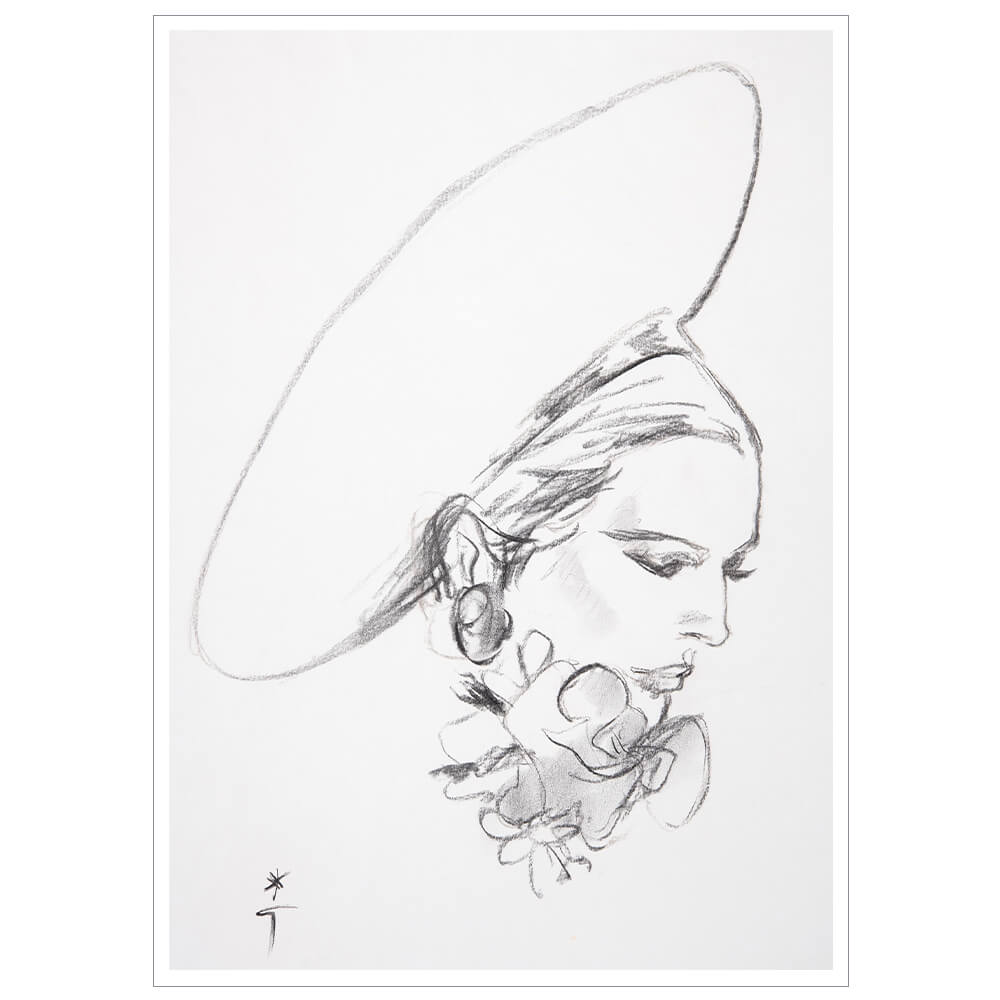René Gruau
1909 – 2004
BIO
René Gruau’s timeless narratives of elegance and style ushered in a new era of fashion illustration in the 1940s and 50s that is both instantly recognisable and highly sought after. Beneath the façade of effortless illustration, in which the influence of Toulouse-Lautrec and Japanese woodcuts can be clearly seen, there is a strength of line that is central to his approach to drawing. Whether through energetic sweeping strokes or delicate and deliberate contours, Gruau’s unique style made him a creative visionary and one that places him firmly at the forefront of the grand masters of fashion illustration. In his early career, Gruau contributed fashion illustrations to the Italian magazine Lidel before moving to Paris. The magazine International Textiles recognised the power of his creative talent and were among the first to commission his artworks for the front covers of the magazine. The French magazines Marie Claire, Femina and L’Album Du Figaro were swift to follow. Jacques Fath, Balenciaga, Lanvin, Givenchy, Schiaparelli and Rodier all regularly commissioned Gruau to illustrate their collections however it is with Christian Dior that Gruau is most closely associated. Following the launch of the New Look in 1947, Gruau was appointed advertising director, a role in which he was to continue into the late 1990s. One of his most famous early advertising works for Dior was for Miss Dior launched in 1947. In 1948 Gruau relocated to the United States to work for Harper’s Bazaar and Vogue and as exclusive artist for Flair magazine. Later advertising artworks for Martini, Fiat and Air France are amongst his most recognisable alongside the cinematic poster artwork for La Dolce Vita (1959) and the spectacular advertising for Le Lido and Moulin Rouge, Paris. A major retrospective of Gruau’s work with Dior entitled ‘Dior Illustrated’ was held in London at Somerset House (2010) and in Munich (2012) at the BMW Museum. Other exhibitions have included solo shows at the Palais Galliera Musée de la Mode, Paris (1989) and Musée de la Publicité, Paris (1999). The Musée du Louvre, Paris holds a number of Gruau’s works in their permanent collections.



